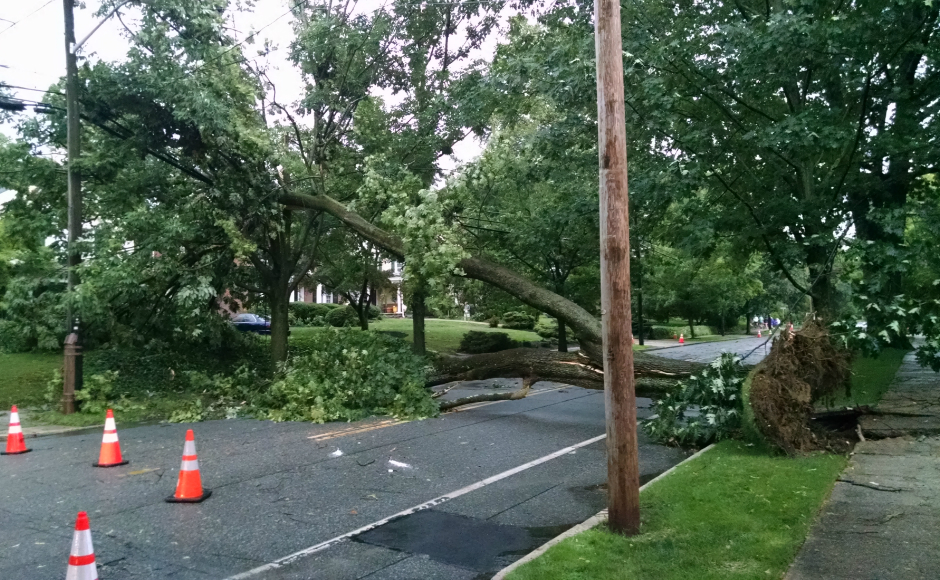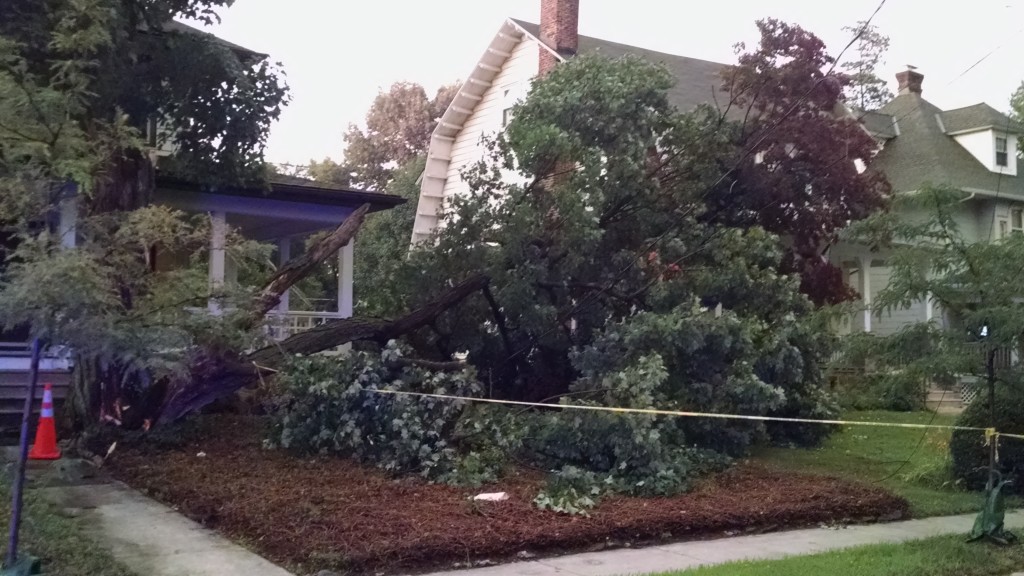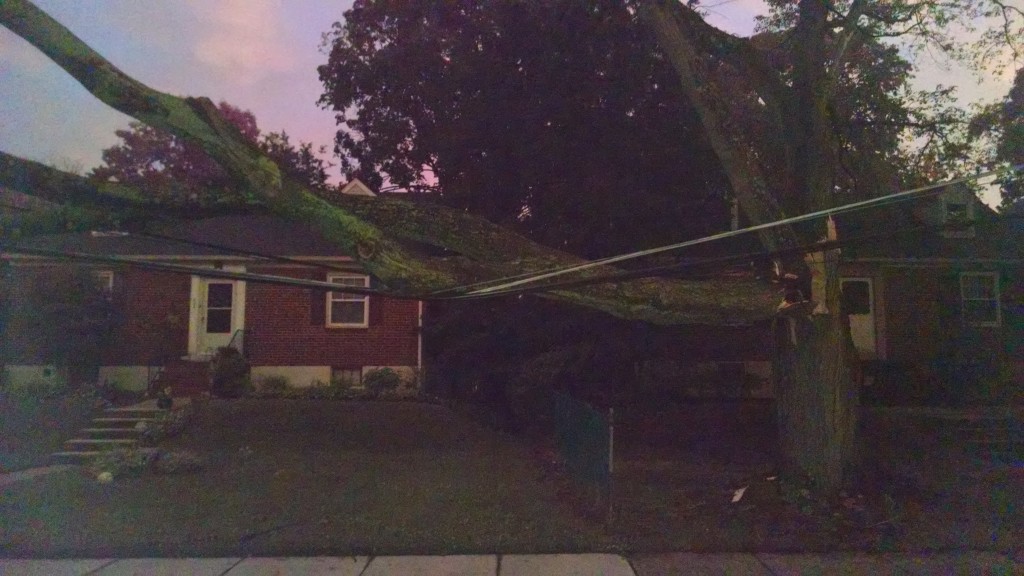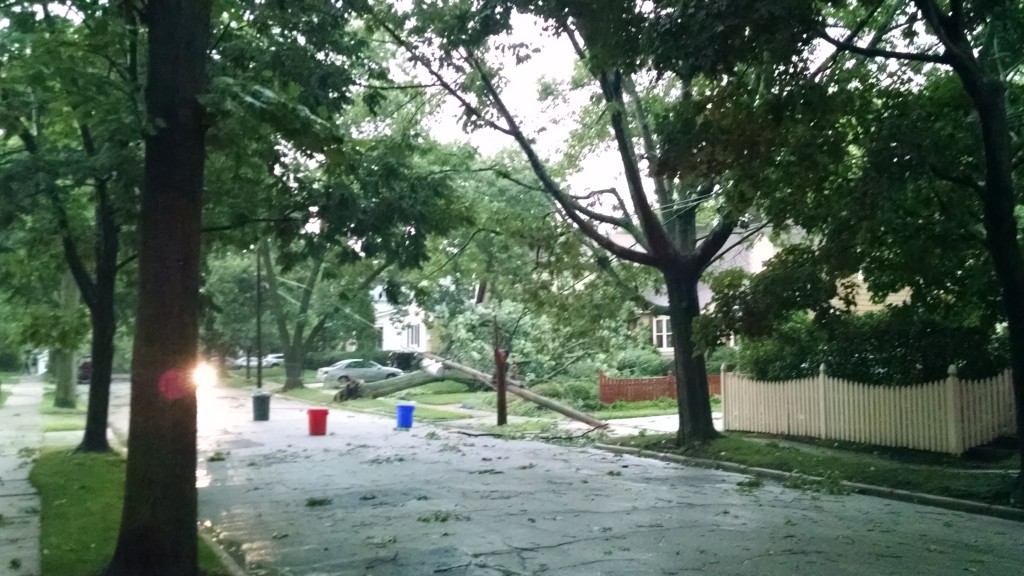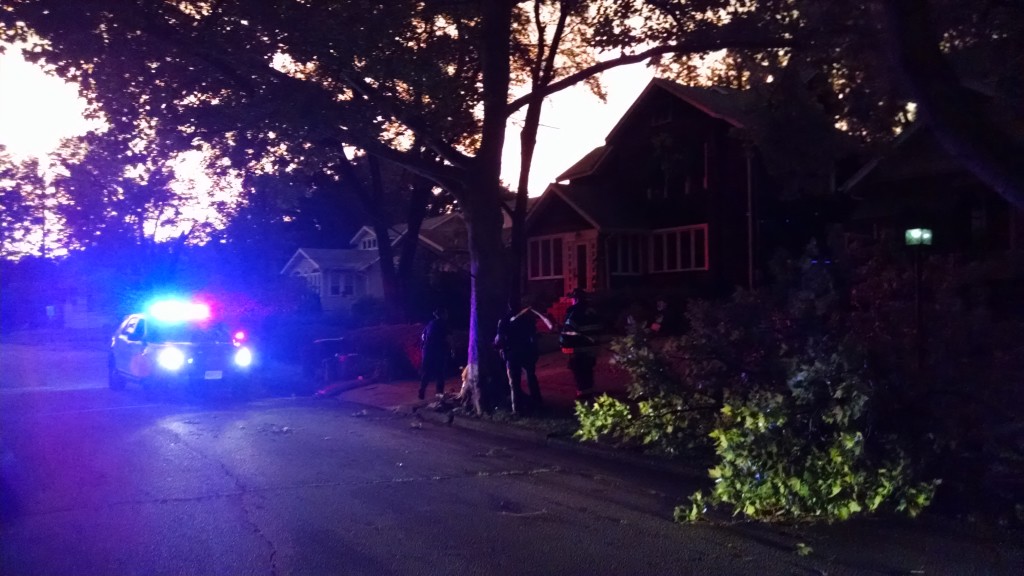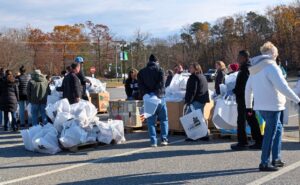Camden County is estimated to have suffered some $4 million in damage from the far-reaching storm.
By Matt Skoufalos
The June 23 storm that ripped through South Jersey was severe enough to fell trees, power lines, and damage homes, businesses, and personal property throughout the region.
Now authorities believe the significance of those damages is sufficient to trigger federal disaster relief.
On Monday, Governor Chris Christie’s office announced that it would be seeking a “major disaster declaration” for an estimated $15 million in damages to property in Atlantic, Burlington, Camden, and Gloucester Counties during the storm. That official declaration is the first step in accessing Federal Emergency Management Agency (FEMA) dollars to assist in storm cleanup under the Stafford Act.
That estimate also exceeds a $12.4-million FEMA threshold for unsubsidized losses, as outlined in a New Jersey League of Municipalities letter from July 2, which also states that 75 percent of damages assessed could be recovered by federal dollars.
“If approved by the federal government, these funds will be made available to reimburse the agencies for emergency work and protective measures, debris clearance, and the repair of damaged roads and other public infrastructure,” a statement from the governor’s office said.
In Camden County, the scope of the damages totaled about $4 million between public and private infrastructure, according to county spokesperson Dan Keashen, with the storm hitting hardest in places like Cherry Hill, Voorhees, Gibbsboro, Winslow, and Waterford.
“If you were at that [I-295] interchange on 561/Haddonfield-Berlin Road, pretty much everything south of there was hit very hard,” Keashen said.
Keashen noted that the storm was probably the most intense in recent memory for the brevity of its duration, with straight-line winds toppling trees, damaging homes, and leaving residents without power for hours or days.
“Within a six-hour period, we did about 70 percent of the 9-1-1 call volume that we did over 24 hours in Hurricane Sandy,” he said.
“This was really a historic event for Camden County.”
Neither was county infrastructure spared in the storm. Berlin Park was closed for several days due to fallen trees, the Office of Veteran Affairs was offline for almost eight days, and bridge repairs along County Road 561 were set back a week by the felling of an old-growth tree in the area, Keashen said.
“We were lucky someone wasn’t injured or killed,” he said–and as hard as Camden County was hit, “Gloucester County was hit harder.”
With FEMA officials in the region, damage surveys will continue in South Jersey, Keashen said. Their assessments will be compared with those made by the county Offices of Emergency Management, and again at a state level.
If the disaster designation is made official, FEMA will establish a regional disaster recovery center at which property owners who have suffered a loss due to the storm can apply for access to assistance.
“It’s very clear and decisive that this was an actual disaster,” Keashen said.
For as much as the region has been ravaged by extreme weather in recent years—Hurricanes Irene and Sandy come to recent memory, as does the historic derecho that leveled Atlantic County in 2012—Keashen recommended a few upkeep considerations that can help mitigate damage risk.
“Survey your home, survey your yard; try to be proactive in regards to cutting back growth from the house,” he said. “Ultimately, from an emergency management perspective, you always want to keep bottled water in the house; you always want to prepare for power outages.
“The hope is that this is not the new normal,” Keashen said. “The hope is that storms of this nature are going to continue to remain as unlikely as the damage that was done by this one.
Get more local news that matters. Check out NJ Pen on Facebook and Twitter.


